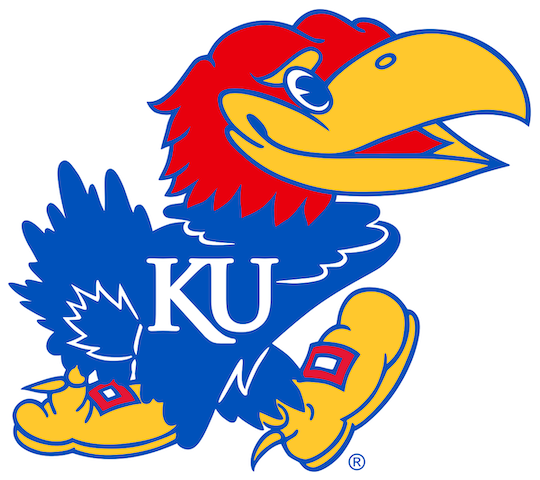James Naismith's Legacy
Sept. 16, 2011
LAWRENCE, Kan. – It might have been more than 70 years since James Naismith last stepped foot on a basketball court, but he continues to have an enormous impact on the game and the University of Kansas each and every day. Thursday night a select few who have had much success in the paint and on the air came to KU’s campus to help celebrate the 150th birthday of the legendary basketball pioneer.
The event was put on by KU libraries and is part of a four month long exhibit featuring artifacts and historic photos of the game and its inventor based off of collections from McGill University, where Naismith graduated; Springfield College, where he was teaching when he invented basketball; and the University of Kansas, where he founded KU’s long-running basketball program and worked for 40 years.
Joined by former KU broadcasters Max Falkenstien and Gary Bender, Jayhawk greats Jerry Waugh and Bud Stallworth discussed what impact the game has had on their lives because of Naismith’s invention of the game more than a century ago.
Waugh, who played at Kansas from 1948-1951 and was an assistant under Dick Harp (1957-60), remembers the game, which Naismith invented as something football players could do during the off-season, being introduced to him at a very young age.
“I can recall as a little kid in Wellington, Kan., my dad put a wooden backstop up on an elm tree out in my backyard and that is where I was introduced to basketball,” Waugh remembered. “Back then I played the game and I shot the baskets, but if I didn’t make it, I had another shot and we won the game.”
For Jayhawk great and former NBA player Bud Stallworth, his introduction to the sport came at a much less innocent time in his life.
“My parents were both educators in the segregated South,” the Harstelle, Ala., native said. “For me, basketball was an activity rather than a career track, but it was also a game that helped break down a lot of barriers. I was not only recruited to play in college, but I was recruited to break down those racial barriers in high school during the 1960s, when there were not any black kids going to white schools,” Stallworth remembered.
Even though the former All-American faced adversity in the segregated South of the late 1950s and early 60s, he still had aspirations of making a living playing the game he loved.
“When I was in the first grade, my teacher had us write down what we wanted to be when we grew up,” he remembered. “And I wrote on a sheet of paper that I wanted to be a professional basketball player. At that time no one else in that small town in northeast Alabama had even heard of professional basketball, but that was my goal.”
Soon men and women in Hartselle and all across that section of the state would become well versed in the game and its players as Stallworth left KU after his junior season and forged a six-year playing career in the NBA with the Seattle Supersonics and the Utah Jazz.
 Back on campus, longtime Kansas commentator Max Falkenstien recounted all that has changed since he first started watching the game more than a half century ago.
Back on campus, longtime Kansas commentator Max Falkenstien recounted all that has changed since he first started watching the game more than a half century ago.
“KU has moved from Robinson Gymnasium to Hoch Auditorium to Allen Fieldhouse,” Falkenstien said. “I can remember as a kid watching the players don their uniforms in Robinson then walk the block or two to Hoch with towels wrapped around their necks.”
Falkenstien has seen many changes since he first took the microphone to announce Jayhawk basketball games in 1946, including uniform and hair styles.
“Back in Jerry Waugh’s day they wore short-shorts, now they have progressed into half trousers,” he said. “The hairstyles have also changed but some of the biggest changes include the introduction of the shot clock and in 1987, the three-point basket.”
Naismith came to Kansas by way of Canada and Massachusetts to invent the game in 1891. Fast forward 120 years and there have been plenty of adjustments since first KU basketball coach first put up those peach baskets.
“Back in his (Naismith’s) day, it was nine on nine instead of five on five and there was no dribbling,” said retired KU and NBA broadcaster Gary Bender of the game’s early beginnings. “You could only advance the ball by passing and every time you shot it, it would end up in the peach basket and you had to stop play to get it out and have a jump ball at center court.”
“Being the man he was and the intellect he had, I think Dr. Naismith would have adapted to what the game has become today,” Bender said. “Ironically enough he is the only losing coach in Kansas basketball history, but as former NFL coach Joe Gibbs once said, `The measure of a man’s success is not in the number of achievements but in the amount of people he has inspired.’ That is what this great game has done for me and all of you,” Bender said. “We have been inspired by a remarkable tradition.”
Thanks to James A. Naismith, that tradition lives on each winter as 16,300 fans fill Allen Fieldhouse for each home men’s basketball game. It may not be that same peach basket and round ball with stitches Naismith first created in Lawrence during the late 19th century, but the game’s competitive spirit and his legacy are echoed by the thousands of men and women who play it each and every day.

